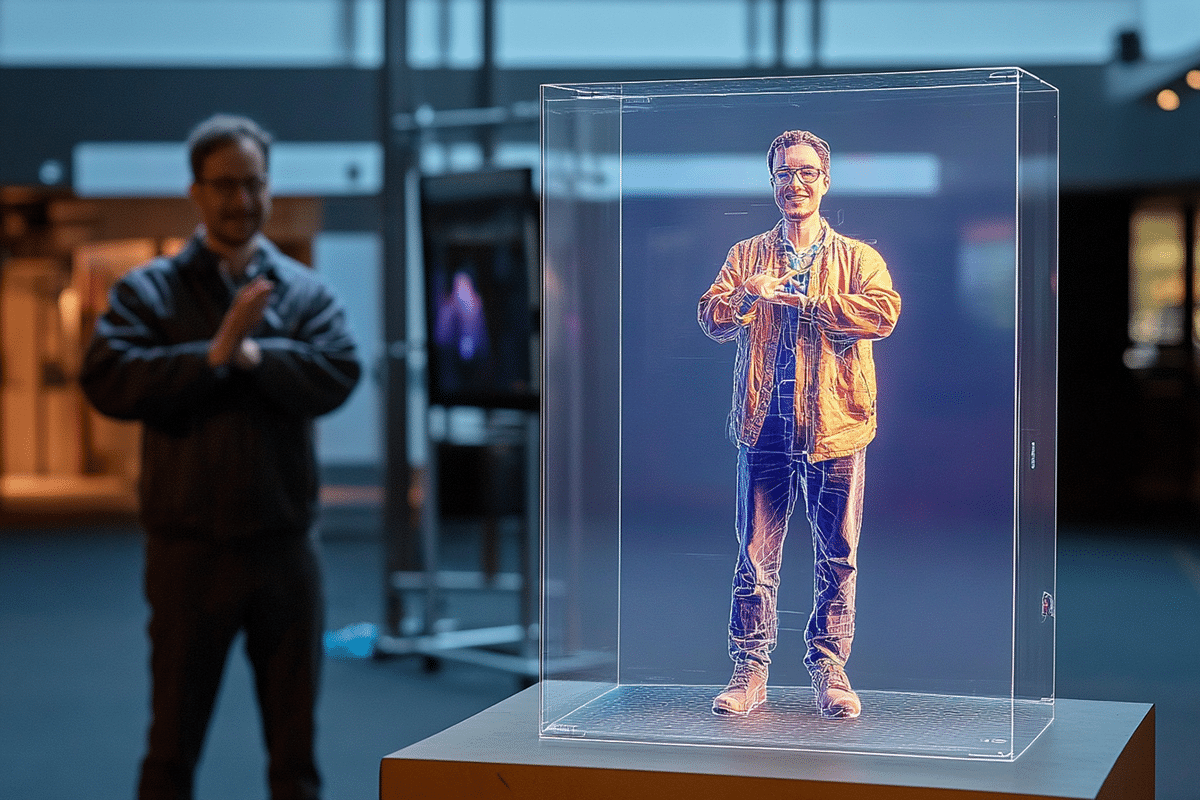A new wave of communication technology is emerging, and it’s changing how we interact with one another. US startup Proto has introduced what it describes as the world’s first holographic communications platform, designed to beam life-size “3D” video into homes, universities, hotels, and medical centers. This cutting-edge tech promises to revolutionize virtual interactions by creating the illusion of three-dimensionality, bringing a deeper sense of presence to video calls and presentations.
Proto’s flagship product is a large box, weighing over 400 pounds and standing taller than most NBA players. Using a blend of visual effects like shadows and reflections, the box creates a realistic illusion, making it appear as though a person is physically present. While not technically holograms, the visual effects effectively trick the brain into perceiving depth and three-dimensionality. The technology can utilize any 4K camera, including smartphones, to beam both live and pre-recorded video into the box.
Proto has already showcased the versatility of its platform with high-profile events, such as beaming William Shatner from Los Angeles to a convention in Orlando, Florida. The technology is already finding its way into various sectors, with installations in universities, hotels, and medical centers across the US. Major corporations like Amazon, Verizon, and Walmart have also adopted the technology, demonstrating its potential in business communication and advertising.
The company offers several models of its holographic box. The two full-size versions, the Proto Epic and the newly released Proto Luma, range in price from $29,000 to $65,000. For those looking for a smaller, more affordable option, Proto offers the Proto M, a tabletop version that stands 30 inches tall and weighs under 30 pounds, priced at $5,900. For businesses looking to lease, the full-size models are available for $2,500 a month.
Despite its impressive capabilities, Proto-to-Proto communication is not yet available, meaning two users communicating through separate boxes still need an additional camera, like a smartphone, for real-time video chats. However, only one Proto box is required for one-way communication, making it a versatile tool for events, presentations, and business meetings.
Proto’s innovation has already been utilized in places like New York’s JFK Airport and the Beverly Wilshire hotel in Beverly Hills. At the hotel, it offers a virtual concierge service in suites and penthouses, elevating the guest experience with a life-size holographic presence. In the healthcare sector, Proto has started working with clinics like the West Cancer Center in Tennessee, where doctors beam themselves into remote clinics to provide patient care. This method of communication is particularly useful for oncology and palliative care, where non-verbal cues and personal interactions are crucial.
Educational institutions have also embraced Proto’s technology. Universities such as MIT, Stanford, and the University of Central Florida are using the platform to beam in guest lecturers from around the world. At Loughborough University in the UK, students reported feeling a strong sense of co-presence with holographic lecturers, making the experience feel more authentic and engaging compared to traditional online lectures.
The potential applications of Proto’s technology extend beyond business and education. The company envisions a future where smaller versions of its devices could be found in living rooms, retailing for under $1,000. This home-based model could transform the way families connect across long distances, offering an alternative to video calls that feel more like real-world interactions. The immersive nature of the experience, combined with its lifelike quality, could redefine the future of virtual communication.
As this technology continues to develop, it stands at the forefront of a new era in communication, where the boundaries between physical and virtual presence begin to blur. Proto’s holographic platform may still be in its early stages, but it is already laying the foundation for a future where lifelike, three-dimensional video calls become a common part of our daily lives.
